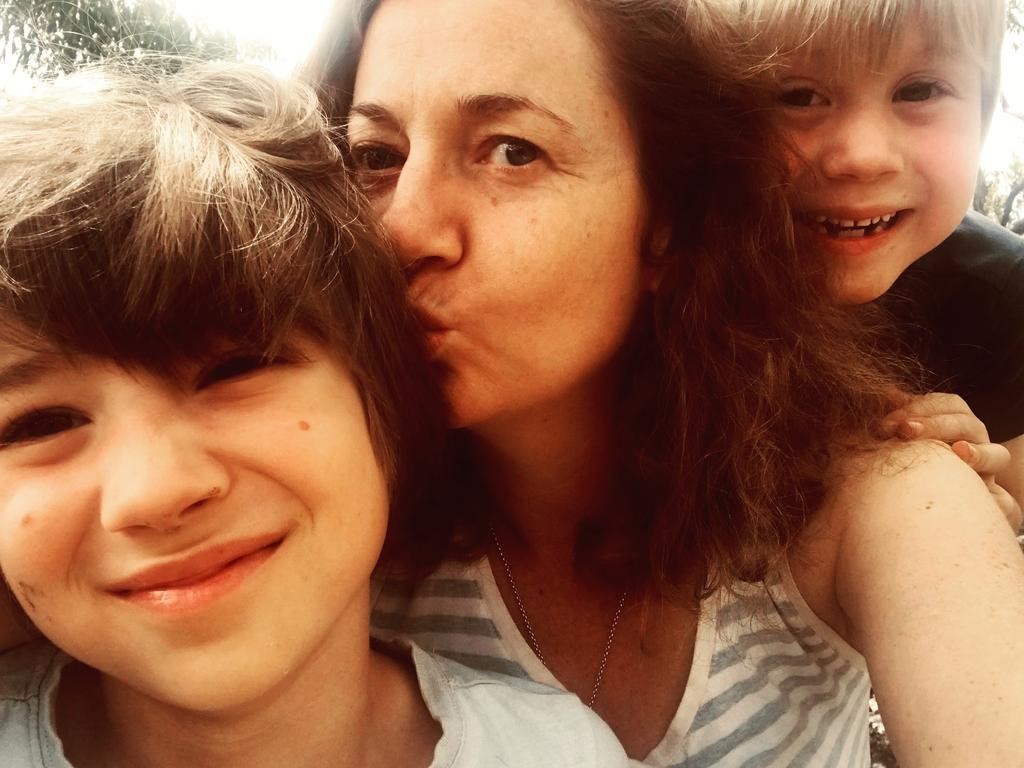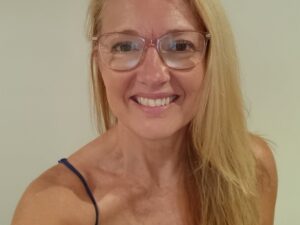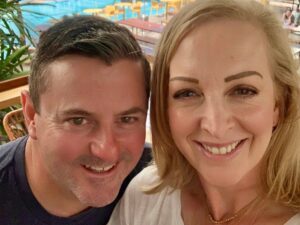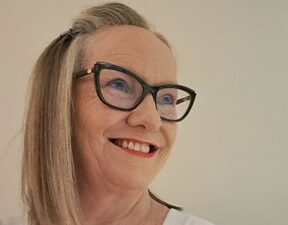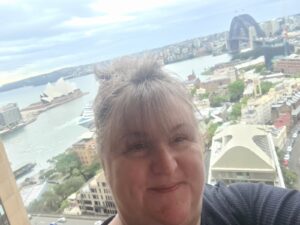I was just 11 years old when the rug was pulled out from under my idyllic childhood.
One day, I was doing cartwheels and roller-skating with my neighbourhood friends – and the next, a doctor was burning the backs of my eyes with a laser. I was awake. And yes, it hurt.
Blurry vision had led to a diagnosis of Von Hippel-Lindau (VHL) disease – a condition where multiple tumours grow in various parts of the body, including the brain, spinal cord, abdominal organs, and eyes. In my case, a large tumour had sprouted in my retina. Although the name was a tongue-twister I could barely pronounce as a kid, I knew intimately what VHL meant.
You see, I’d grown up never knowing how long my dad might live. He also had VHL disease, but until I was diagnosed, he and my mum didn’t know it was genetic.
I’d seen him hugging the toilet, violently vomiting from brain tumour symptoms. I’d visited him in hospital after major surgeries, I’d witnessed the lengthy recoveries and I’d watched him struggle to lift his toolbox as he returned to work as a builder – not fully recovered, but determined to keep providing for his family.
Now, we were making back-to-back appointments with the same ophthalmologist.
Many more eye surgeries followed. The tumours kept coming – hundreds in that eye alone – and eventually, I lost the vision in it my 20s.
My remaining seeing eye is all I have now, but it, too, has been hit hard by VHL over the years. I’m now 44 and legally blind. I can no longer drive, which is a significant disability – especially as a mum of two.
It’s another rug that was pulled out from under me, but perhaps the biggest came when I was 19.
I had been accepted into a university course in dance education, but I also had a large tumour in my brainstem. During the operation to remove it, I lost hearing in one ear – and my balance. Bye-bye, dance dream. Recovery took months, and I spiralled into a deep depression. Looking back, it was the feeling that my life wasn’t my own. VHL was deciding it for me.
But like any good dancer, I pivoted – and became a writer. A better career choice for a life of surgery and increasing disability.
Eight years after that first brain tumour, two more appeared in my cerebellum. The surgeries to remove them left me with postoperative hydrocephalus – a complication the hospital missed. I was left with cognitive and behavioural changes that made me childlike, deeply impacting my relationship with my then boyfriend (who later married me despite VHL) and leaving us both emotionally shattered. It took a year to recover. But I did.
Fast Forward a few years and I faced my third major brain surgery. By that time, I had a three-year-old and a 10-month-old to care for. I struggled so much – with the symptoms leading up to the surgery and then learning to walk again after it, all while caring for my babies – but with the support and love of my family, I recovered – again.
My most recent major operation was to remove a dangerous tumour high up in my spinal cord. Without surgery, I risked becoming a quadriplegic. The surgery was high-risk, and recovery was long- but it was a success. My kids were a little older for that one – then aged 8 and 10, and a big support.
The good news in this never-ending horror story is that neither of my boys inherited VHL – thanks to IVF and genetic testing. But they’ve had to watch their mum fight for her life and quality of life, again and again.
They’ve also learned to support and accommodate a mum with disabilities, which I’m proud to say they do beautifully. For instance, they know how to communicate with me when I’m struggling to hear. Oh and did I mention I’m now severely hearing impaired? A tumour in my “good” ear (the other is completely deaf) has deteriorated a lot of my remaining hearing. Again, VHL – this time a tumour in my inner ‘good’ ear. I wear a hearing aid now but I still struggle – my family knows how to include me but the world is a confusing and at times, distressing place for me.
Today, I accept my deficits and identify as a disabled mum. I am hearing and vision impaired and I use a walking stick to steady myself. I am also prone to falling.
My VHL story isn’t over as I still have tumours in my brain, spine, pancreas, and kidneys – including a neuroendocrine tumour in my pancreas. If it keeps growing, it will need to be surgically removed next year.
VHL has stolen so much from me including my functions and ability to shape the life I imagined. That said, I am deeply grateful to be alive, to still be here for my husband and kids – and to have had a window in my health to even get pregnant and have them.
And now, it looks like they might have me for a lot longer.
Belzutifan, a new non-surgical treatment for VHL, has opened up a world of hope for me and others with this condition. It’s not a cure, but it could stop these tumours from growing – and possibly even shrink them. It might help me stay out of the operating room longer, hold onto my little remaining vision and hearing, keep writing, and best of all, keep watching my kids grow up.
It also might stop the rug from being pulled out from under them, too. I am not going anywhere!

